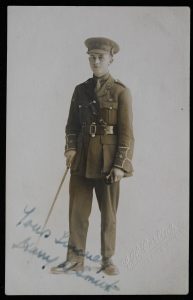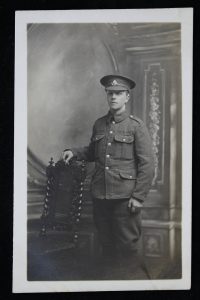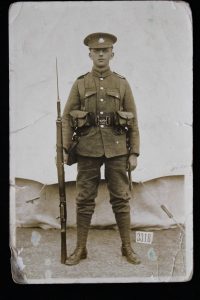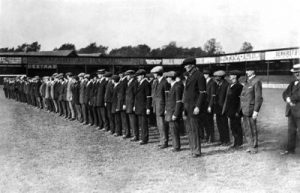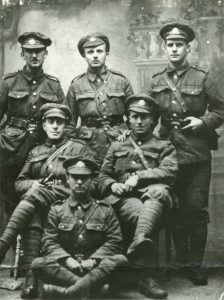Troops of the 10th (Service) Battalion (1st Hull), East Yorkshire Regiment marching to the trenches near Doullens, 28June 1916.


The following images are of the 13th East Yorkshire Bn (Hull Sportsmen), from the diaries of Private, George Williams, and his friend Lance Corporal, Charles Verity, MM, 13th EYR. (https://transcribathon.com/en/documents/id-17242/item-190593/)
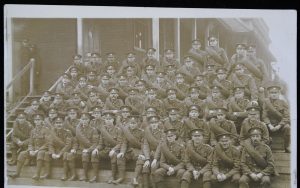
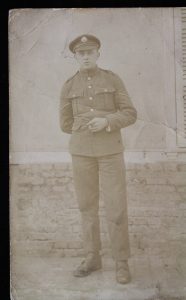
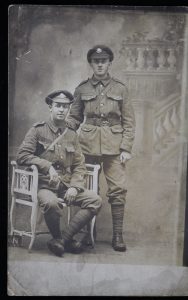
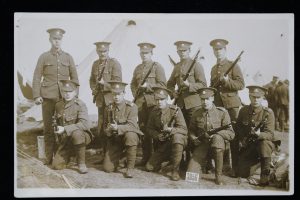
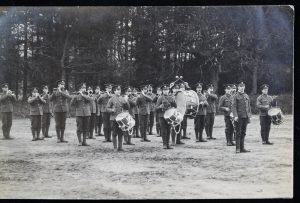
10th East Yorkshire HQ Signal Section (above)
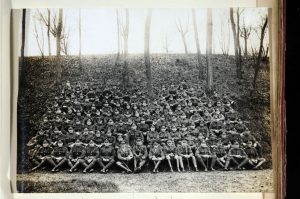
The 12th Battalion, East Yorkshire Regiment (92nd Brigade, 31st Division), in the line in the Arleux sector, near Roclincourt, 9 January 1918.

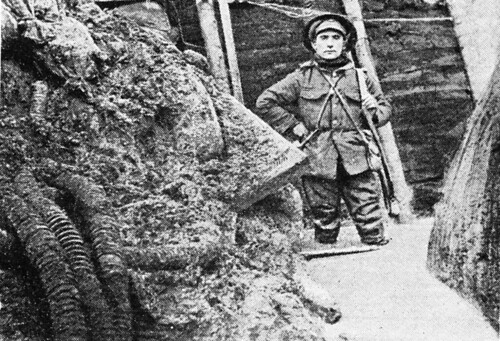













Pictures courtesy of the Imperial War Museum Collection
Hull Pals and Stories

PRIVATE WILLIAM HERBERT HARPER 14/84. Born in 1886 William was the second of four children and eldest son of William and Hannah Harper. A Tram Driver by trade, he married Edith Priscilla Morrill on 28th September 1913 and the couple lived at 4 Beech Grove, Westburn Street, Hull with their daughter Edith Jnr. When war came William answered the call of King & Country enlisting at City Hall in October 1914 joining the 14th Battalion East Yorkshire Regiment before transferring to the 12th on his arrival in France in June 1916. He was killed in action at Beaumont Hamel on the Somme on 13th November 1916 and is buried in Euston Road Cemetery; he was 30 years old.
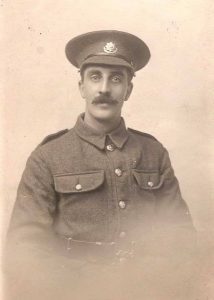
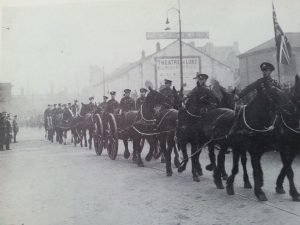
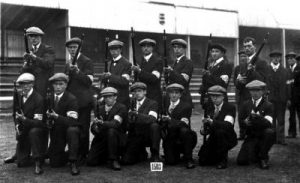
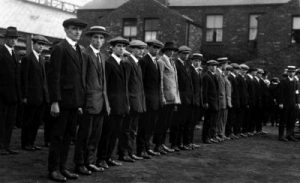
Recruits to the 10th Battalion East Yorkshire Regiment (Hull Pals) in training
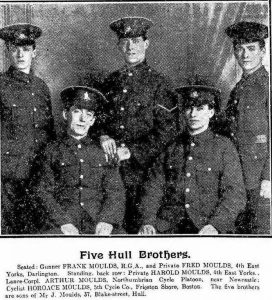
Hull Pals, prior to Oppy Wood 1917
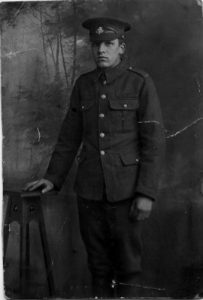
PRIVATE GEORGE THOMAS BURNETT 12/1128. (Photo left). Born in 1897, George was the youngest of two sons to John and Emilie Burnett of 19 Eaton Terrace, Providence Row, Hull. A Keelman before the war, he enlisted at City Hall on 19th November 1914 joining the 12th Battalion East Yorkshire Regiment, ‘The Sportsmen’, 3rd Hull Pals. It seems that during his training George had a certain issue over returning on time from a pass, something he was disciplined over twice and which cost him a fair few days wages. He was killed in action at Serre on November 13th 1916 in the last desperate act of the disastrous Somme campaign and his body was never recovered. George is commemorated on the Thiepval Memorial; he was 19 years old. It seems too great a coincidence that three men such as George, Harold Crawford (Day 1295) and James Andrews (Day 1294) who all stood within 13 men of each other in the same queue on the same day to enlist, could all die on the same day without their having fought side by side. At least they were in good company.
Hull Pals Memorial Post. SGT, WILFRED WAKELIN NEAL 12/311. Born 1893, Wilfred was the third of four children and youngest son to Oswald and Alice Neal of 28 Redbourne Street, Hull. A Printer by trade he enlisted at City Hall in September 1914 joining the 12th Battalion East Yorkshire Regiment, 3rd Hull Pals. Wilfred was killed in action on 13th November 1916 durin
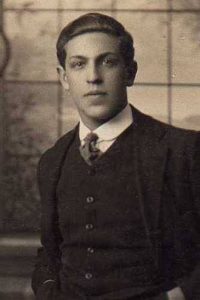
g the attack on German positions at Serre which marked the last desperate action of the disastrous Somme campaign which had ground on since July 1st killing or wounding more than a million men. Impossible to imagine a million men. More poignant to look into the eyes of this proud young man and multiply his loss by the
population of Birmingham. That should do it. Wilfred is buried in Euston Road Cemetery; he was 23 years old.
Frederick Wyer who served as an air raid warden and fire guard in WWII (his main occupation was road sweeping for Hull Corporation). He served in the Royal Army Medical Corps and was badly gassed in WWI. He died at his home in Rodney House, 52 Street, Hull, 1954.
With regard to the “great trouble among the men” mentioned above – there was a rumour circulating at the time that the real reason for the patrols made by the battalion that week were made with the aim of recovering the body of the son of someone with influence; merely rumour but I would like to know more.
Jack enlisted with the Pals in 1915, and was promoted to 2nd Lieutenant 5th August 1916, when his active service began in France.
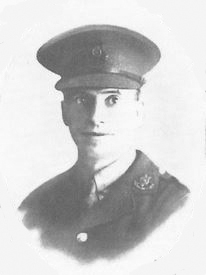
An extract from The London Gazette dated 12th June, 1917, records the following:-
“For most conspicuous bravery and self-sacrifice in an attack. Owing to darkness and to smoke from the enemy barrage, and from our own, and to the fact that our objective was in a dark wood, it was impossible to see when our barrage had lifted off the enemy front line. Nevertheless, 2nd Lt. Harrison led his company against the enemy trench under heavy rifle and machine-gun fire, but was repulsed. Reorganising his command as best he could in No Man’s Land, he again attacked in darkness under terrific fire, but with no success. Then, turning round, this gallant officer single-handed made a dash at the machine-gun, hoping to knock out the gun and so save the lives of many of his company. His self-sacrifice and absolute disregard of danger was an inspiring example to all. (he is reported missing, believed killed)”
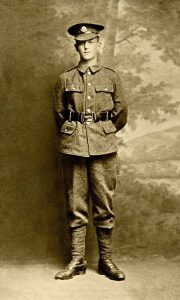
PRIVATE FRANCIS KISH GUY VOWLES 12/1487. Born in December 1898, Francis was the eldest of ten children to Francis and Mary Vowles of Long House Farm, Barrow Gurney, Somerset. It appears he must have relocated to Hull sometime between the 1911 Census and his lying about his age in order to enlist in 1915. He joined the 12th Battalion East Yorkshire Regiment, ‘The Sportsmen’, 3rd Hull Pals. After serving in Egypt over Christmas and New Year 1915-16 he arrived in France on March 8th and shipped north to the trenches of the Western Front. Francis was known as ‘Kish’ to his friends. His family have done Kish proud saving embroideries he sent home from the front, and keeping all correspondence as below including the photograph of a boy in man’s clothes so common among soldiers volunteering to fight for King and Country in the early months of the war. Kish is listed as having died on 24th July 1916. His death was “accidental” and family recollections appear to back up the idea that he was killed when a rifle accidentally went off. Whether it was his own or a luckless comrade’s we’ll never know. Kish is buried in St. Vaast Post Military Cemetery; he was 17 years old, not yet even old enough to serve.
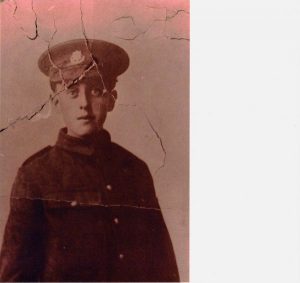
Hull Pals Memorial Post. PRIVATE, JOHN HENRY ARCHBUTT 10/1441. Born in 1896, John was the youngest of three children and only son of Abel and Eliza Archbutt. John never knew his father. Abel Archbutt died when his son was still a baby, and Eliza married Ernest Hudson in April 1903. The family lived at 9 Beech Grove, Princes Road, Hull. John worked as a Fish Merchant before the war and was too young initially, but enlisted on his 19th birthday. He was severely wounded on 30th June 1916 and evacuated to 35th Casualty Clearing Station with severe shrapnel wounds over a third of his body. He didn’t last the day. John Henry Archbutt is buried in Doullens Communal Cemetery Extension No.1; he was 20 years old. The official battalion history says of that day:”Enemy artillery fairly quiet. Trench mortars active.”His photograph is heartbreaking. That is no more than a child.
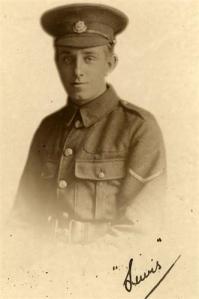
Lance Corporal, Lewis Edward Peek, 10/1155, 10th East Yorkshire Battalion. Born 6th September 1892, Lewis was the youngest of two children to Edward and Georgiana Peek of 88 Summergangs Road, Hull. An Insurance Clerk by trade, Edward had lost his father over the summer of 1914, so how his mother must have felt when her youngest son enlisted in the fight for King and Country I can only imagine, but enlist he did, at Hull City Hall on 6th February 1915 when he joined the 10th Battalion East Yorkshire Regiment, ‘The Commercials’, 1st Hull Pals. Lewis trained at barracks in Hornsea, Beverley and Ripon for the next 10 months before shipping for Egypt on 8th December 1915. The Pals served there until the shipped for France, landing at Marseilles on 8th March 1916 and heading north to the trenches of the Western Front. Like so many of his comrades, Lewis was killed in action in the small hours of 4th June 1916 during the 70 minute retaliatory bombardment which flattened the front line trenches facing the French village of Serre. He is buried in Sucrerie Military Cemetery; he was 23 years old.
 BORN HULL 1881. SON OF JOHN ECCLES (1833-1898) & ELIZA JANE ECCLES, OF THIS HULL ADDRESS. HIS WIFE, ANNIE (FISH) ECCLES, LIVED AT 35 STANIFORTH PLACE, HESSLE ROAD (HIS CWGC ADDRESS). A FORMER SOLDIER WHO SERVED IN THE BOER WAR. RECALLED AT THE OUTBREAK OF THE WAR AND SENT TO FRANCE. HE SERVED AS A SERGEANT WITH THE 2ND THE EAST YORKSHIRE REGIMENT (EYR). HE WAS WOUNDED AT YPRES, AND HAD THE UNIQUE EXPERIENCE OF READING ABOUT HIS OWN DEATH IN THE NEWSPAPER, WHILE LYING IN A LIVERPOOL HOSPITAL.
BORN HULL 1881. SON OF JOHN ECCLES (1833-1898) & ELIZA JANE ECCLES, OF THIS HULL ADDRESS. HIS WIFE, ANNIE (FISH) ECCLES, LIVED AT 35 STANIFORTH PLACE, HESSLE ROAD (HIS CWGC ADDRESS). A FORMER SOLDIER WHO SERVED IN THE BOER WAR. RECALLED AT THE OUTBREAK OF THE WAR AND SENT TO FRANCE. HE SERVED AS A SERGEANT WITH THE 2ND THE EAST YORKSHIRE REGIMENT (EYR). HE WAS WOUNDED AT YPRES, AND HAD THE UNIQUE EXPERIENCE OF READING ABOUT HIS OWN DEATH IN THE NEWSPAPER, WHILE LYING IN A LIVERPOOL HOSPITAL.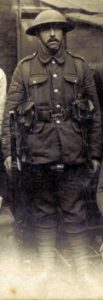
GEORGE ERNEST ATKINSON WAS BORN WHITBY, YORKS. 1881. SON OF JOHN ATKINSON (1847-1927) & MARGARET ELLEN HODGMAN (1860-1929), OF 32 COLONIAL STREET, HULL (1915). HE HAD THREE BROTHERS AND TEN SISTERS.
A HOUSE PAINTER BEFORE THE WAR. HE WAS ENGAGED TO BE MARRIED, WHEN HE WAS KILLED IN ACTION, ON 25/04/1918, AGED 37. HE ENLISTED IN HULL, ON 11TH JANUARY 1915, WITH THE 13TH EAST YORKSHIRE REGIMENT. THIS WAS THE 4TH HULL PALS BATTALION, KNOWN AS THE (‘T’OTHERS). HE TRANSFERRED TO THE 1ST EAST YORKSHIRE BATTALION AND WAS PROMOTED TO SERGEANT, IN ‘B’ COMPANY. HE WAS KILLED IN ACTION, NEAR ZONNEBEKE, BELGIUM, ON 25/04/1918, AGED 37. HE IS COMMEMORATED ON THE TYNE COT MEMORIAL, BELGIUM. HIS ARMY EFFECTS WERE LEFT TO HIS FATHER, JOHN
HIS NAME IS ALSO LISTED ON THE HULL CITY ENGINEER DEPT. MEMORIAL (CURRENT LOCATION UNKNOWN). HE IS PICTURED HERE WITH HIS FIANCEE (UNKNOWN).
Thank You to Ray Page, the Great Nephew of George Ernest Atkinson, for help providing the above details and photograph.
